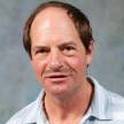Location
USU Eccles Conference Center
Event Website
Fire in northern California during 2014 was the second largest in terms of burned areas since 1996. An increase in fire risk in California is attributable to human-induced climate change. To evaluate the severity of fires in 2014, satellite merged data of burned area from the fourth generation of the Global Fire Emissions Database was analyzed. The Keetch–Byram Drought index (KBDI) was included as well. The KBDI is computed with both the observational and simulated daily precipitation and maximum surface temperature. Projections for the western United States did show a steady increase of the fire risk based solely upon the KBDI. Year 2014 appears to be a turning point indicative of an accelerated increase in 31 extreme fire risk. The pace of increasing extreme fire risk has accelerated since the early 21st century and will surpass the range of natural climate variability. Observations show much faster increases of the KBDI and extreme fire risk measures
Abstract
Fire in northern California during 2014 was the second largest in terms of burned areas since 1996. An increase in fire risk in California is attributable to human-induced climate change. To evaluate the severity of fires in 2014, satellite merged data of burned area from the fourth generation of the Global Fire Emissions Database was analyzed. The Keetch–Byram Drought index (KBDI) was included as well. The KBDI is computed with both the observational and simulated daily precipitation and maximum surface temperature. Projections for the western United States did show a steady increase of the fire risk based solely upon the KBDI. Year 2014 appears to be a turning point indicative of an accelerated increase in 31 extreme fire risk. The pace of increasing extreme fire risk has accelerated since the early 21st century and will surpass the range of natural climate variability. Observations show much faster increases of the KBDI and extreme fire risk measures
Citation Information
Simon Wang, Jin-Ho Yoon, Robert R. Gillies, Lawrence Hipps, et al.. "Extreme 2014 Fire Season in California: A Glimpse into Future?" (2015)
Available at: http://works.bepress.com/lawrence-hipps/7/

Simon Wang is the Assitant Director, Utah Climate Center